THE BEST CYCLING TRAINING PLAN

The right cycling training plan can make you faster and help you reach your performance goals while having fun doing it. But the wrong ones can be an expensive time-waster and deflate your cycling enthusiasm.
With all the cycling coaches, packaged plans, software platforms, multiplayer games, performance trackers, and bro-science out there now, especially with the recent cycling boom, how do you figure out what kind of cycling training plan is best for your riding ambitions, your work/life/riding/budget situations, and your personality?
This question goes well beyond what are the best indoor trainers and cycling apps or what do you need to do to get ready for your next big event for first whatever. Enthusiasts ride year-round or nearly so, both inside and out, and have goals that stretch across a season or multiple ones.
The right plan supported by the right services can help us accomplish all that we want from this cycling passion that is such a big part of our lives.
In this post, I’ll share with you how I sorted through the different cycling training plan services, suggest what matters most, share my evaluations of how the leading ones stack up, and tell you how In The Know Cycling testers train.
To make this post more accessible for those with limited training experience as well as those of you with a lot of it, I’ve tried to simplify the training and technology terms and steer clear of judging the exercise physiology behind different workouts and plans.
- Compare prices of indoor trainers from 15 stores I recommend at my Know’s Shop
- Read my reviews of the Best Power Meters to train with power both indoors and outdoors
WHAT YOU NEED TO KNOW
Among those companies that provide cycling training plans, four demonstrate well what an enthusiast-level cyclist can expect from subscribing to different types of services. Here’s a quick summary of what I’ve found sets these four apart, what holds them back, and their relative strengths and weaknesses. All will cost you the equivalent of between $10 and $20 a month.
FasCat Coaching is a leading example of what you can get from a training service that has expanded beyond one on one coaching to provide packaged cycling training plans.
++ What sets them apart: More outdoor-like workouts and training blocks whether ridden outdoors or indoors
+ Other relative strengths: Strength and nutrition training plans, customer support, training learning tools including their podcast, forum, and blog
– – What holds them back: Requires more self-coaching than other services to connect blocks of workouts, modify your schedule, and assess your progress
– Other relative weaknesses: BYO (bring your own) entertainment, slower product development pace, dependency on founder/head coach for future development
TrainerRoad is one of two leaders among cycling training plan providers whose roots are in offering libraries of cycling workouts for rides to choose from.
++ What sets them apart: You can create a season-long cycling training plan that adapts to your changing schedule and performance progress similar to what a personal coach does
+ Other relative strengths: Range of workouts, customization, learning tools (podcast, forum, blog), customer support, product development path
– – What holds them back: Workout designs are the least like riding or doing events you are training for and are presented in a clinical way with lecture-like instructions
– Other relative weaknesses: BYO entertainment, no motivators built into the workouts

Wahoo X includes the SYSTM libraries of cycling training and other endurance sports-related workouts, weight and yoga training, and the RGT multiplayer cycling platform.
++ What sets them apart: Focus on making you a more complete cyclist both through their cycling workout designs and complementary strength, yoga, and mental training plans and the option to apply those using a range of entertainment options
+ Other relative strengths: Cycling workouts and training customization
– – What holds them back: SYSTM and its combination with RGT have important gaps including no outside workouts or season-long planning, relatively weak customer support, and a jack of all trades, masters of none set of training assets
– Other relative weaknesses: Demanding test protocol, limited social component, uncertain new product path and pace
Zwift is the leading fitness service that offers indoor cycling on a multi-player gaming platform.
++ What sets them apart: Entertaining and immersive environment motivates better workout execution in what feels like less time
+ Other relative strengths: Outdoor-like group riding and racing environment, well funded to do whatever it chooses
– – What holds them back: Zwift’s workouts and plans are very limited. You really need to bring workouts and plans designed by others into the Zwift platform environment to reach cycling enthusiast-type goals
– Other relative weaknesses: Inside-only workouts, no training support or learning tool, product development path doesn’t appear to make Zwift-created workouts and plans a priority
In The Know Cycling is ad-free, subscription-free, and reader-supported. If you want to help keep it rolling without any added cost to you, buy your gear and kit after clicking the store links on the site. When you do, we may earn an affiliate commission that will help me cover the expenses to create and publish our independent, comprehensive, and comparative reviews. Learn more.
CYCLING TRAINING PLAN SERVICES
Looking across the current landscape, I see 5 categories of cycling training plan services to help you achieve your riding goals. Each is rooted in a different approach to training but also overlaps a bit with others.
Coaches – Cycling coaches are the original training “tool” (sorry coaches) to improve a cyclist’s speed and performance. Coaches are all about a customized, one-to-one relationship with their cyclist athletes. Goal setting, workout design, customized plan development and updates, feedback, motivation, etc. all happen on a personal level.
Some coaches and coaching companies have developed packaged cycling training plans with no personalization that they sell to supplement their individual coaching business. And while many (most?) use performance tracking tools like Training Peaks to monitor the performance of their athletes, some prefer their own measures to evaluate progress and manage the feedback loop.
Carmichael Training Systems (aka CTS) and Peaks Coaching Group are two long-established coaching groups. While there are national cycling coaching levels and standards within coaching groups like these, the unique nature of one-to-one coaching makes it hard for me to evaluate coaching organizations or individual coaches within the Coaches category.
Unfortunately, for all the benefits that personalized training from the right coach can provide you, the costs are usually at least 10x more expensive than other cycling training plan services available to enthusiasts. That makes it a non-starter for all but the most affluent or highest-level performers amongst us.
Trackers – Software platforms like Training Peaks, Today’s Plan, Strava, and Garmin Connect are principally built around tracking your ride performance and history.
![]() If you have a cycling training plan, Trackers help you see the progress you are making by providing feedback over different time horizons from months of rides to segments within a ride. They use common measures like your distance, speed, and heart rate and proprietary ones like your training stress or segment speed ranking. Even without a plan, these trackers can be useful by measuring your performance improvements either compared to your own past rides or against others on any given day or period.
If you have a cycling training plan, Trackers help you see the progress you are making by providing feedback over different time horizons from months of rides to segments within a ride. They use common measures like your distance, speed, and heart rate and proprietary ones like your training stress or segment speed ranking. Even without a plan, these trackers can be useful by measuring your performance improvements either compared to your own past rides or against others on any given day or period.
Some of these Trackers also provide a list of personal coaches or their packaged training plans. It’s in their interest to do so as the coaches and plans often depend on the kind of tracking software platform they sell to assess the ride data you upload to them from your devices.
Going for segment PRs, KOMs, and QOMs, some in real-time, are game-like features of some of these like Strava and Garmin Connect. This sets them apart from Training Peaks which is one of the more traditional and comprehensive Trackers focused on providing longer-term cycling training plan progress more than one-off or interim progress (and gratification) from chasing segments. Today’s Plan and others offer tracking platforms more similar to Training Peaks.
Most Trackers have a free, limited service level that merely logs your workouts. Their paid, premium tools do a fuller range of workout and fitness analyses and are sold as monthly or annual subscriptions that cost the equivalent of $10 to $20/month.
Plans – Coaches looking to scale or grow a business beyond what they can accomplish with one-on-coaching sell a range of standard cycling training plans. These are designed for different cycling disciplines like road, gravel, and cyclocross and sub-disciplines like road fondos, road criteriums, road climbing, etc. Most have their origins in outside training but are adaptable to or include workouts designed inside trainers.
Many are also designed for a training period such as building a base level of cycling fitness early in the season while others get you ready for a specific event you have on your calendar. Often, you can get them modified to the amount of training time you have available each week, your cycling level, and a range of other ways to align with your cycling profile and objectives.
Similar to the Coaches category and unlike the other ones, there aren’t large companies in the Plans category. That said, Training Peaks connects you to thousands of these standard cycling plans created by these smaller coaching companies. You can find one for you using filters like the type of cycling, duration, skill level, time available, price, and whether their plans use “structured workouts” that seamlessly export to your Garmin, Wahoo, or Zwift platform for outdoor or indoor rides.
It’s hard to know which of these plans are offered by coaches that are principally focused on developing workouts and training plans and those that are selling plans as an adjunct to their one-on-one coaching. There are services and plans from some long-established coaches like Hunter Allen, Tim Cusick, and Joe Friel that sell lots of plans with structured workouts for the experience level and training hours that fit the profile of a cycling enthusiast.
 I have several years of experience using the training plans developed by FasCat Coaching. While they appear to have a strong personal coaching business, their marketing suggests that packaged cycling training plans for enthusiasts and racers are a major and equally important focus for them rather than an adjunct to their personal coaching. I’ll use them as an example of the Plans category of cycling training services.
I have several years of experience using the training plans developed by FasCat Coaching. While they appear to have a strong personal coaching business, their marketing suggests that packaged cycling training plans for enthusiasts and racers are a major and equally important focus for them rather than an adjunct to their personal coaching. I’ll use them as an example of the Plans category of cycling training services.
Plans providers also work closely with Trackers like Training Peaks and some use preferred performance analysis that sets them apart beyond the proprietary workouts in their plans. Some like FasCat also integrate tools like Zwift into their cycling training plans and workouts and have plans dedicated to training for Zwift racing.
Prices vary but the initial price for a training 6 to 12-week plan is typically about 2-3x of what you might pay for a month for a subscription training service. So while a Tracker like Strava or Training Peaks might cost you the equivalent of US$8-10/mo and Zwift US$15/mo for an annual subscription, a structured training plan will normally cost you the equivalent of US$20-30/mo.
But, you can use the structured plans over and over again at no additional cost. For example, you can do a plan to build your base each winter and then use a plan to keep you sharp between key events in a season as often as you want. This effectively makes the cost of these plans the same or less as the other cycling training plan services like those I’ll describe immediately below.
Workouts – The world of software apps beyond just cycling are principally designed to perform a specific function, be they for work productivity, personal entertainment, social interactions, or any of probably dozens of other types of apps that we use on our phones, tablets, and computers.
Cycling apps like TrainerRoad (which I shorten to TR for the rest of this review) and Sufferfest, the largest cycling part of Wahoo X were originally designed to give you libraries of cycling workouts to choose from.
While I understand that most people still pick workouts from their libraries, these apps also allow you to create cycling training plans from combinations of their individual workouts.
You start by putting in your cycling discipline, goal events, available hours, and other training preferences and they come up with a block or plan of workouts for you. Some like TrainerRoad are designed to learn from the data from your actual day-to-day workout performance and suggest different workouts or workout levels in your upcoming workouts to keep you progressing toward your goals.
Others, like the Wahoo X SYSTM, encourage you to add a block of workouts to your cycling plan from their yoga, mental, and strength training libraries to complement your cycling workouts and make you a more capable cyclist.
While not designed around a multiplayer game like Zwift and similar apps, there is a level of “gamification” or immersion built into some of these Workouts apps to keep you coming back.
If you pay for an annual plan, you’ll pay the equivalent of US$11/mo for SYSTM and US$16/mo for TR. Subscribing on a monthly basis runs $15/mo for SYSTM and $20/mo for TR.
Smaller than both SYSTM and TR, Xert is the only other significant Workouts app, costs about half the price of TR and was earlier to adapt your workout difficulty based on your performance against workouts in the plan. It also has a robust tracking platform similar to Training Peaks.
Games – Apps like Zwift, Rouvy, RGT, and a handful of others are built around trying to give you an outdoor race, group, or solo ride experience on an indoor trainer. Some actually try to give you an even better or different experience so you don’t feel guilty about not going outside or the need to go outside as often… or at all.
 Zwift does its thing by creating computer graphics-generated routes that represent well-known rides or interesting fictional roads and landscapes they call “worlds”. Rouvy and others actually place you (or your augmented reality self) in videos of actual routes they’ve filmed and put into their games.
Zwift does its thing by creating computer graphics-generated routes that represent well-known rides or interesting fictional roads and landscapes they call “worlds”. Rouvy and others actually place you (or your augmented reality self) in videos of actual routes they’ve filmed and put into their games.
There are individual workouts and training plans available from these Games apps but they are rather rudimentary. The experience of riding or racing with others around you in life-like situations is what these services are principally designed to do. Completing workouts or an entire training block or plan they’ve designed is possible but doesn’t appear to be a priority for them. They are more basic and less well-integrated than the structured workouts and training plan blocks designed by the Plans and Workouts category services.
You can download workouts from some Plans like FasCat right into the Zwift game platform and upload your workout performance data to Trackers like Training Peaks from Zwift. That’s mostly about Zwift’s APIs enabling it to gain more subscribers who want to do non-Zwift designed workouts in Zwift’s “worlds” than Zwift looking to be a leader in cycling training plan services.
A monthly subscription to Zwift, the overwhelming leader in this Games category, costs US$15/mo. They don’t offer an annual plan. Others in this category are a few dollars per month cheaper either on a monthly or annual subscription basis.
WHAT MATTERS MOST IN A PLAN
For the purposes of this review of cycling training plan services, I’m going to compare leading providers of Plans, Workouts, and Games.
Coaches are probably more expensive than most of us can afford or want to pay for though perhaps more effective. Trackers, while perhaps necessary to capture and assess your training results, don’t have enough of the elements that most enthusiasts need to create a plan to get faster.
For me and as a cycling enthusiast like many of you, there are four buckets of things that matter most in creating a cycling training plan that fits my goals, situation, and personality. Some of these may be more or less important to you or totally miss what is so feel free to prioritize the things that are most important to you or come up with your own list.
1. QUALITY – When it comes to evaluating the quality of a plan and all that goes into it, I want to know things like:
- Workouts – How good are the individual workouts in a plan? Is there some rationale or purpose behind each?
- Blocks – How well do the workouts combine into a multi-week training block to make desired progress?
- Plans – Is there a purposeful connection between the workout blocks to create plans for my season’s goals?
- Customization – How customizable or adaptable are the workouts, blocks, and plans to my situation?
- Comprehensiveness – How comprehensive are the training tools to do all the things that will make me faster?
2. MOTIVATION – To keep on my plan, I want to know:
- Fun – How much fun am I going to have doing the workouts and plan from this service?
- Comparability – How similar to what makes me love cycling will I find in the workouts and plan?
- Entertainment – How much entertainment comes with the workouts?
- Immersion – What level of immersion will I feel doing the workouts?
- Social – Are there social components that will motivate me?
- Support – Do I get some kind of support along the way?
- Learning – Will I learn what is behind the workouts and plans to help me get psyched to do them?
3. COMPATIBILITY – In this bucket, I want to know how compatible the hardware, software, and me-ware needs of the cycling training plan services are including such things as:
- Trainers – How well do they work with smart and dumb (fluid) trainers?
- Outdoor – How well do they support outdoor workouts as well as indoor ones?
- Power Meters – Do they talk with power meters and head units over ANT+ and BLE, over iOS and Android?
- Displays – What number and quality of displays do I need to get the full benefit from them?
- Feedback – Are Trackers like TrainingPeaks and Strava and their metrics part of the performance feedback loop or do they have their own metrics and feedback?
- Habits – How compatible is the training plan with my riding habits and preferences?
4. PATH – Most enthusiasts that do structured cycling training recognize that it’s at least a season-long and more likely a multi-year process to keep improving enough to reach your goals. It’s also quite clear that the products and services from Plans, Workouts, and Games providers are advancing their offerings rapidly and some of the providers themselves are investing and growing more than others and along different development paths.
While it’s not easy to predict what’s coming next, it is important to consider the paths these companies and their products appear to be on based on what they’ve said or are doing, their financial position, and where they may be going as a company.
So that you invest your cycling training plan time and money with one that appears to be on a 2-3 year path that suits your training goal horizon, I’ve tried to evaluate these companies on:
- Product – How much product development have they announced or do they periodically introduce to improve the cycling training benefit to enthusiasts?
- Integration vs. Interoperability (IvI) – Are they moving toward a proprietary, “walled garden” approach with integrated metrics, tools, hardware, software, and/or protocols that will make the training benefit better or make me more locked into their product? Or are they working to make their plans, workouts, games, and apps more interoperable with other protocols, products, and players of the cycling “ecosystem” that will improve cycling training?
- Outlook – Based on their position, growth, and funding (where known), does it look like they will thrive, hang on, or fall away? What light does that shed on the ability to execute their path to serve cycling enthusiasts?
HOW THE LEADING SERVICES STACK UP
As I mentioned earlier, I’m only comparing Plans, Workouts, and Games for this review. The right Coach can be the most effective option but beyond the budget of many (most?) enthusiasts. Trackers are very useful in giving you feedback on your progress but don’t have enough built into them to create more than the most rudimentary cycling training plan.
And in reality, I’m only comparing one or two representatives from the Plans, Workouts, and Games categories. Three of them – TrainerRoad and the cycling components of Wahoo X from the Workouts category and Zwift from Games – appear to be market share leaders and among the best in what I believe matters most in choosing what you would want for your cycling training plan.
While I don’t know how much relative share FasCat has of the Plans category, they do appear to have a large, integrated, and growing set of offerings and user base at least on par or perhaps better than those from some of the well-known coaches. They represent a lot of the best of what you can get from the Plans category.
I have been a customer but have no commercial relationship with any of these cycling training plan services. So I know them reasonably well but am not getting compensated in any way for reviewing or linking you to them. That only happens when you buy from a store I link to and there are no store links in this post. The only benefit I get is having more of you as happy readers and more well-trained fellow enthusiasts to ride with (and pull for me).
By comparing these four cycling training plan services options against the criteria I’ve found matter most to my training, I hope to give you a more in-depth evaluation that will lead to you choosing which to use among those I think are and will continue to be winners.
This puts me at odds with many publications that give you feature descriptions and summaries of how to use a long list of cycling training plan services without ever providing comparative evaluations against the things that should matter most to enthusiasts like those I’ve listed above.
I’ll take those odds.
While I like to see innovation and start-ups succeed as much as the next guy, some training services are struggling and may not make it. I want to use, review, and recommend those that will continue to be around and advance their services as I continue to train and work to achieve the goals I have over the next few years.
So here’s a compilation of my comparative ratings. I’ll tell you why I assigned each rating to each service for each criterion in the remainder of this review.
While I’ve found all of the criteria in the left-hand columns matter to me to some degree, look at them more as a list of things for you to weigh in adopting the right cycling training plan solution for your goals, real-world situation, and personality. Some will matter more to you than others and others may make or break your decision.
Below, I restate each evaluation criterion and then explain why I’ve given each of the four cycling training plan services a comparative rating of being better, worse, or somewhere in between the others.
Let’s dive in.
QUALITY
Workouts – How good are the individual workouts in a plan? Is there some rationale or purpose behind each?
TrainerRoad (TR) and Wahoo SYSTM were both built on libraries of individual workouts. Many enthusiasts have historically used these two services principally for indoor training workouts either because they don’t have the time or weather to do outdoor rides or believe an indoor structured workout has a better training effect than an outdoor one (debatable). They may never actually do a prescribed 6 or 8-week block of workouts with a particular goal in mind or connect the blocks to achieve season-long performance and fitness goals.
Both TR and SYSTM have expanded well beyond these individual workout libraries. More on that in the discussion of other rating criteria below. But the foundation for both is in their workouts. That’s why I put them in the Workouts category while noting overlaps to Plans, Trackers, and to a lesser extent, Games in my Venn diagram.
The workouts from TR (rated + or comparatively better than others in this review) and SYSTM (also +) are well designed to achieve a specific purpose (e.g. climbing, sustained efforts, recovery), address a rider’s weakness (e.g. sprinting, endurance, breakaways), or target a workout zone (e.g. tempo, sweet spot, VO2 max). They vary in duration, intensity, level of effort, etc., and most change the power output or cadence or ride situation every few minutes over the course of a ride.
You can go into TR or SYSTM and use the filters to pick a plan based on some of these variables. TR also has a feature called TrainNow that suggests workouts for you based on your recent training history and the time you have available to do a workout.
FasCat (rated 0 or average in comparison to the others being reviewed) like others in the Plans category build its training plans from individual workouts with similar objectives and designs to those from TR and SYSTEM. But, they don’t feature or make available those workouts or encourage you to pick one to do separate from the integrated, weeks-long blocks of workouts. Their workouts are intended to work in coordination with each other to reach your goals rather than stand-alone in pursuit of them.
Once you have a FasCat plan, you can certainly pick and choose among the many, well-thought-out workouts to do on any given day. And I’ve done that on days when I’m not up for doing the workout that is part of the training plan. But that defeats the coordinated workout design of the plan. Guilty.
Zwift’s workout list is also not an emphasis of theirs. And while there are Zwift workouts that accomplish similar objectives as those from the Workouts providers, the number and range to choose from are far more limited. There’s also no easy filtering system to find a workout suited to your training purpose. That’s why I rate Zwift a “-” or comparatively worse than the others on this measure.
Instead, Zwift follows a more populist approach or one, per the Oxford dictionary “that strives to appeal to ordinary people who feel that their concerns are disregarded by established elite groups.” For example, you get to choose from those in the Zwift Academy 2021, Zwift Academy 2020, etc. (their equivalent of award winners?) or the Workout of the Week (just one) or those based on how much time you have “to burn.”
There are a couple of dozen 30-40 minute workouts under the Baby on Board heading that I assume allow you to get your workout in while your infant naps, another half dozen each from famous cyclists, and surprisingly just 3 to choose from under “Fun is Fast”, the tagline of their advertising program.
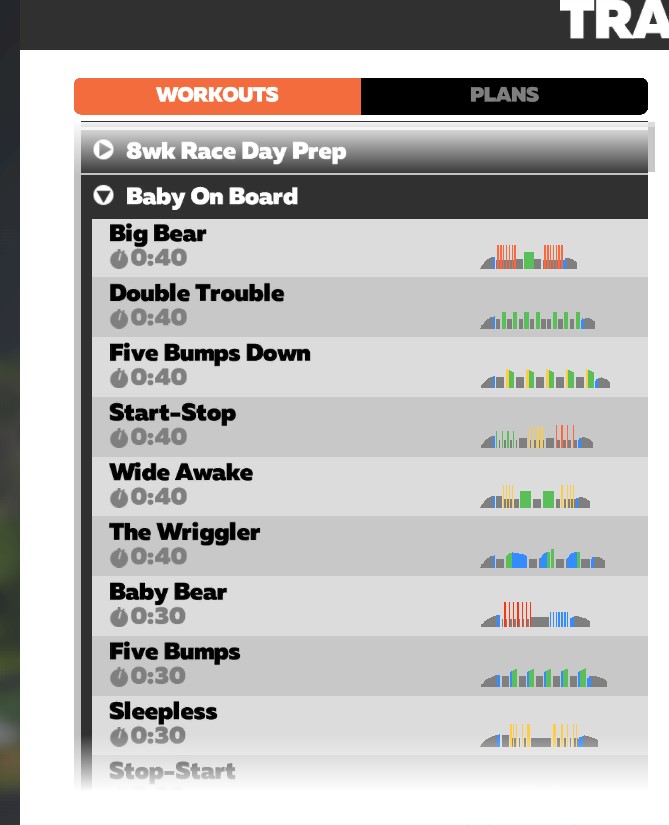 While I get the appeal of this approach, there’s no stated training objective behind the individual workouts or how they are grouped.
While I get the appeal of this approach, there’s no stated training objective behind the individual workouts or how they are grouped.
There are some training blocks or assemblages of workouts in Zwift listed by training objective which I’ll get to in my evaluation of their blocks.
I’m not a cycling coach or exercise physiologist but it’s clear that there is a lot of science that goes into the workouts from each of the companies. That said, I don’t know and won’t try to compare the quality or performance benefit of workouts from any of the better Plans or Workouts services or that they are different enough to make you a faster or fitter cyclist.
It’s more likely that how well those workouts are combined by these services and executed by you and me over time will better determine how well we achieve our goals.
While I’ll go into more detail about this in the Compatibility section below, it is worthwhile noting that TR, SYSTM, and Zwift workouts were all designed for indoor trainers initially. TR does allow you to choose whether to do their workouts indoors on a trainer or outdoors on your bike with the workout uploaded to your Garmin or Wahoo head unit. SYSTM plans to provide this capability but doesn’t at this time.
FasCat and most other Plans workouts come from outdoor workout design origins and can be done successfully indoors without change. FasCat does recommend a few of their workouts are best done on an indoor trainer (e.g. sprint intervals or climbs) if you don’t have the long enough flat or steady climbing outdoor terrain to do them well. They have also designed individual workouts and entire blocks to be done on Zwift and enable you to use their regular workouts on Zwift by bringing them over from the TrainingPeaks calendar.
The practical effect of the indoor or outdoor origins of these workout designers comes clear in the design of the workouts themselves. The overwhelming majority of workouts designed by TR, SYSTM, and Zwift are an hour-long or less and have a lot more frequent changes in power output and cadence than those from FasCat.
Unless you ride on flat roads or those with steady gradients and have few stop signs or traffic concerns, it is difficult to complete some TR workouts outdoors as prescribed because of these frequent changes.
FasCat training blocks have workouts that are typically about an hour for the intermediate training level during the week but longer ones more typical of the kinds of rides you do outdoors scheduled on the weekends. While some of the FasCat interval workouts are as dynamic as those from TR and the others, most of them have longer intervals with no cadence call-outs. They also prescribe challenging group ride workouts on Saturdays and recovery rides on Sundays, consistent with what a lot of us roadies already do.
If you are principally motivated by doing stand-alone workouts or have the knowledge or experience to combine them to achieve your goals as a kind of “self-coach,” then what TR and SYSTM offer is really all you need. The rest of us, and I think that includes most enthusiasts who are serious about getting faster and achieving our fitness and event performance objectives need more than individual workouts alone.
Certainly, TR and SYSTM with their workout foundations appreciate this and have put serious investments into building on them into training blocks, the subject of the next section.
Blocks – How well do the workouts combine into a multi-week training block to make desired progress?
Want to build some baseline fitness after a layoff or at the beginning of the season? Already have a good level of fitness but want to prepare for a race or event (e.g. road race vs. time trial vs. 100-mile long gravel ride)? Want to improve your strength or flexibility or your ability to climb or sprint?
These kinds of objectives are accomplished through training blocks. Most call these “training plans” but they are really building blocks in a longer-term plan to achieve your goals.
Training blocks are typically 6 to 8 weeks of structured workouts that are selected or designed to work interdependently to achieve a short-term goal. Typically they prescribe 4-6 workouts per week with 2-3 of those being hard workouts and the other days being lighter ones or days off. The 4th week is usually a “recovery week” which has a combination of shorter yet still intense workouts and days off the bike.
You can’t go from zero to a road race podium or do well on a 100-mile ride with just a 6 or 8-week training plan. You can get there by combining multiple blocks of training over 3-6 months by progressively building a base and improving the level of fitness, strength, flexibility, skills, and power (2-4 months), and then by adding training for the specific type of event you want to do best at (1-2 months).
While the strategies to get you to your goals vary, generally these blocks move from groups of steady, lower intensity workouts early in the season (e.g. November through February for Northern hemisphere cyclists) to those with more, high-intensity near and above threshold interval training along the way (March-April), and finally to those specifically designed to simulate the kind of riding or events you are targeting (May-August).
Together these blocks of training make up a season-long cycling training plan to build and maintain your fitness and help you achieve your targets. This is the way most exercise physiologists and coaches recommend you do it whether your targets are being on the podium at high-level amateur races, finishing an event within a certain time, or riding well every week throughout the season on group rides with your buds.
Training blocks are commonly called “training plans” and are a primary focus of Plans services. In my experience, FastCat’s (+) are well designed for a specific purpose and more similar in their workouts and the adaptations you need to develop from them to the actual kind of riding or event you are training for than I’ve experienced in blocks from other services.
Choose your cycling discipline (e.g. road, cross, gravel, MTB), where you are in the year (off-season base, early-season build, event-season specialty), and how much time you have to train each week (4-8hrs, 8-12hrs, 12-16hrs). From there, you can pick between plans or blocks suited to your situation.
For example, if you are a road cyclist that is moving from base to building race or event fitness and can train 8-12hrs a week, you can put that into the filters and get FasCat interval plans to choose from for different disciplines such as road racing, climbing, crits, time trials, stage races, and Zwift races.
To prepare for a MTB, gravel, or cyclocross race, FasCat will give you a different set of training block choices uniquely designed to prepare you for events in those disciplines.
TR (0) gives you similar types of filters. Their blocks are oriented to a slightly different mix of cycling disciplines and also give you options based on different training philosophies. Overall and in specific cases, I find their training blocks to be more generic and less like the events you’ll be doing than those from FasCat.
For example, TR gives you the option to establish your early season base fitness by picking either from blocks with a more time-efficient approach that combines a roughly even number of workouts just below, at, and above threshold with low-intensity ones or those based around a training philosophy of mixing more longer, low-intensity workouts with less above threshold ones. TR incorrectly calls this sweet spot vs. traditional. It’s more accurately known as pyramidal vs. polarized training.
During the build phase, you have short, general, and sustained power build options to choose from regardless of your disciplines except if you are a triathlete, in which case you have to pick between 4 power build options (sprint, Olympic, half, full).
TR’s specialty phase blocks differ by type of event – rolling road race, climbing road race, criterium, 40k TT, and century.
Joe Pine, co-author of The Experience Economy and a former colleague of mine likes to say “people don’t want choice; they want exactly what they want.” Instead of giving you too many training block choices, TR starts your training plan design by having you put your profile and objectives into their Plan Builder tool. From there, they pick training blocks for you.
They put the Plan Builder tool at the top of their training block page (they call it training plans) essentially encouraging you to use that tool rather than pick out your own training blocks that are grouped below.

Since the Plan Builder gets you to a season-long cycling training plan made up of training blocks and geared to your A-priority events, I’ll lay that out in more detail in the next section.
Yet TR sticks to shorter workouts in their training blocks that never approach the duration of the events or the length of segments in them you’ll be doing. Their data shows that we won’t complete 2-3 hour workouts on a trainer as often as we will hour-long or shorter ones. Amen to that!
But they also argue that you don’t need to do long workouts to prepare for a long event and you won’t see them in their training blocks. All run their specialty phase training blocks last 8 weeks. The highest volume ones average just over 7hr/week of training with no more than a 2-hour long workout even for an outdoor ride on their century training plan.
No need to do a 3-4 hour workout to prepare for that 5-7 hour event? Exercise physiologists and cycling coaches will certainly debate that point. I’ve never felt comfortable doing a 100-mile road or 60-mile gravel event without having ridden at least 3/4 that long in my legs and my psyche.
Rather than showing you their training block options (or “plans” as they call them), SYSTM (0) takes you right into their online Q&A process to suggest one for you. While cycling-focused, SYSTM doesn’t assume you’re just a cyclist or that you just want an on-the-bike plan.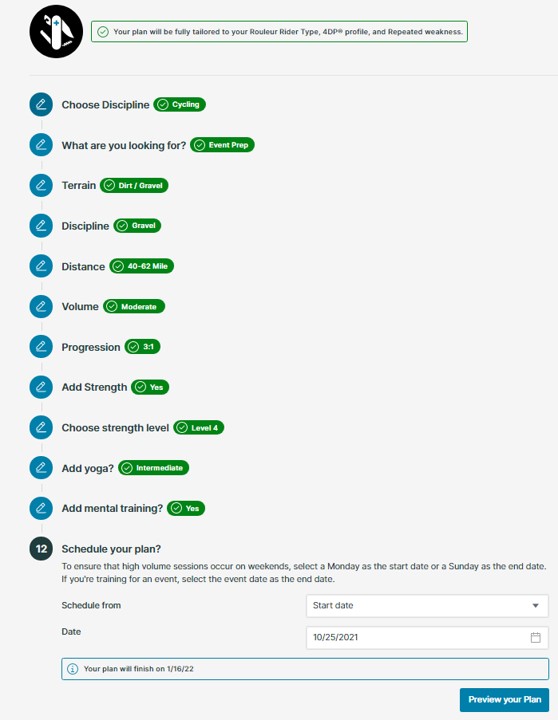
In addition to (or instead of) various types of road or off-road options and even one for online racing, you can select integrated swim/bike/run or stand-alone yoga, strength, and mental training plans. Those last three have always been a primary reason why I’ve kept my Sufferfest (now SYSTM) subscription over the years even as I’ve waxed and waned on their bike workouts and plans. More on this in the Comprehensiveness section below.
Even with my prior Sufferfest experience and knowing some of the unique aspects of SYSTM’s training approach, I don’t find the Q&A process for coming up with training blocks as simple or intuitive as FasCat’s or TR’s.
For starters, there are a lot more questions to answer. That’s fine, but some of the answers assume you know a fair amount about things like your 4DP profile (your what???) or whether you want to focus on elements within it like AC or NM without explaining them. A lot of people aren’t going to know if or where they should focus even if they know what those terms mean.
Other questions ask you to select between levels (like level 1 through 5 for strength training) without giving you any idea what those levels mean. You’re also asked whether to choose a 2 or 3 week on, 1 week off schedule without explaining why someone should choose one or the other. (Hint: older athletes need more recovery time so should choose 2:1 but it’s not clear to me what age you make the switch between 3:1 to 2:1. I’ll let you know when I get there.)
SYSTM does produce shorter training blocks (most are 3-4 weeks) and combines them into shorter plans (typically 3 months). For example, the plan shown above is a 3-month one built on a number of blocks to get me ready for a gravel event.
Here are the first two weeks of the plan itself, complete with strength, yoga, and mental fitness workouts all put on my SYSTM calendar.
Zwift (-) appears to be building its range of plans. They had a little yellow starburst that said “new” over the plans button for a long time until recently. There were 15 of them at the time I wrote this review, each with a rather focused goal (e.g. build or maintain fitness, increase your FTP, ride better on dirt) or discipline (e.g. crit, fondo, gravel grinder, TT, Zwift racing) in mind.
Unlike other blocks or plans that allow you to choose the amount of time you can put into a plan, each of the Zwift plans is designed for a specific level. And the relative time commitment is modest compared to other plans.
For example, the three advanced level plans take 4 to 7 hrs/wk, four of the five intermediate plans take 4 to 5 hrs/wk, and the four beginner level plans take from 1 to 5 hrs/wk to complete. It’s hard to see how you are going to build the needed training adaptations to prepare you for outdoor events during these short training workouts and weeks.
While TR, SYSTM, and FasCat identify and share the training design principles of the 1 or 2 coaches who design the workouts and training blocks you use when you sign up for each service, only a few Zwift plans have different coaches’ names mentioned as their designers. There’s nothing about their training approach other than what you see in the plan itself.
To me, the Zwift workout designs look rather straightforward and similar to the range of outdoor training workouts I’ve done over the years. There’s no hint of the more frequent power and cadence changes you see in the TR and SYSTM workouts that take advantage of indoor training’s absence of outdoor road riding terrain changes or distractions like cars, turns, lights, etc.
Beyond the limitations I’ve described above, my biggest critique is that the Zwift training blocks or plans seem to lack any of the overflowing amounts of fun and engagement you otherwise get doing Zwift. Making those things integral to the plans would probably make me want to train better or longer and have more fun doing Zwift workouts and training blocks than any other indoor service.
There’s no rider or group interaction with people or an avatar doing or leading the same workout or plan, no pursuit of training block badges or virtual training merch, and no added or unique gamification built into the plans themselves beyond what you’d get doing an ordinary Zwift ride.
Well, you do get what looks like an aero-wrecking windshield set between your bars if you are doing a training ride on Zwift. It’s not a great look nor does it do anything other than signal that you are doing your own training ride and you aren’t going to have group riding or drafting fun with the other Zwift kids today.
Training workouts and blocks seem like a missed opportunity for Zwift. And while they report that 50% of their riders do a structured or group workout or one of their “training plans” at least once a month, that seems like a rather limited achievement compared to the 4-6 days a week people use FasCat, TR, and SYSTM.
Further, it doesn’t appear that workout or training plan product development is a priority at Zwift, or at least not enough of a priority to mention it during a Fall 2021 briefing reported by DC Rainmaker.
It looks like Zwift has become the place to train using workouts and plans designed by others more so than Zwift’s.
Plans – Is there a purposeful connection between the workout blocks to create plans for my goals?
As I’ve mentioned above but bears repeating especially if you are jumping into this section without reading the ones above, those 6-8 week groupings of workouts designed to achieve an event performance goal or specific fitness objective are usually called “training plans.”
Because they are short-term-focused and won’t provide sufficient training to achieve your goal, these short-term groups of workouts are better thought of as “training blocks” than training plans. When you purposefully link training blocks together to build on each other, you create a cycling training plan that spans a season or year or multiple years and puts you in a better position to achieve your goals.
Said more simply, if you want to continue to get fitter and faster over the course of a 6 or 9-month season or 2-3 years to achieve race, event, group ride, or for whatever performance or fitness goals you have, you need to knowledgeably add unique, short-term-goal-focused blocks of training together to create a true cycling training plan.
A good cycling training plan will also keep you from stagnating, fatiguing, or breaking down during a season or after multiple seasons either physically or mentally.
For example, if your calendar includes a half dozen road races from May through July or three long road or gravel events between June and August or a 6-week long cyclocross race series in the fall, what’s your season-long plan for optimizing your performance for when the events occur or multi-year plan to get better in those events year after year?
These kinds of season or multi-season long training plans are the forte of Coaches and one of the reasons they can charge what they do. They get to know you and your season and longer-term goals, see how you are performing on workouts and events through the course of a season or two, and regularly update your plan to help continue to progress during and between seasons.
Through their online forum and chat line, and by listening to some of their podcasts on this topic, FasCat (0) will recommend which training blocks to link together to achieve the goals you have during a season or explain how to do it yourself. I’ve learned how to use those tools to combine their training blocks and create a plan each October to prepare me for the half dozen road and gravel events I want to prepare for the following April through September.
But I’ve got to do it and while I don’t mind, FasCat doesn’t have an online tool to help you with that.
With their coaching background, they suggest you’re better off hiring a coach (starting at $175/mo with a 6-month minimum commitment) to help you with that and a whole lot more including periodic plan updates after analyzing your progress. Perhaps some of you can are I can’t justify that kind of spending for my roadie and groadies goals within my family budget.
SYSTM’s (0) 12-week goal-focused plans are 1.5-3x weeks longer than those from others with a similar focus. There’s obviously more than a single block within their plans but they still need to be combined to prepare for a season’s worth of events. Again, there’s no tool to help with that.
Creating your own cycling training plan block by block is easier to do if you prioritize your events. Choose in-season blocks that end at the time of your single A-priority even while working in B and C events as part of your training. Yet the length of many blocks doesn’t support (as they probably shouldn’t) multiple top priority goals that come in shorter time increments than every 2-3 months.
Assuming one of Zwift’s (-) limited number of plans aligns with your event and level, you can add that plan to their general off-season base building plan. Other than that, they offer no guidance in building a season-long cycling training plan.
TR (+) provides the closest thing to having a coach create a season-long plan for you or putting one together on your own.
Their Plan Builder tool asks you a series of questions to come up with the best selection and sequence of training blocks, It starts by asking how much training you’ve been doing recently, how much training you have time you have, and how much experience you have with structured training.
It will then want to know whether you are training for events or not, what type of events or riding you do, when your events are, how long they last, and whether they are A, B, or C priority ones.
From all of that, TR produces a season-long training plan for you by picking training blocks and joining those blocks. Once the plan is created, you can change training days, volume, or workouts based on your preferences.
Here’s the TR plan I created for the 2022 season with no events yet scheduled. I can add them later and the plan will adjust.
First, you can see the weekly effort I’ll be expending based on my Training Stress. Note the colored bars designating the training phase above each month throughout the year.
Next, you’ll see the training blocks the TR Plan Builder has chosen for me.
Finally, here are the workouts that I’m scheduled to do in the first training block.
Combined with how TR has begun to use customizing technology to modify the workout selection and difficulty as you progress through the workouts and provide feedback to their software during the year, this is beginning to approach some of what you can get from a coach.
More on this is in the section below.
Customization – How customizable or adaptable are the workouts, blocks, and plans to my situation?
One of the things I most like about SYSTM (+) is that they customize your training to the type of rider you are.
What I’m not sure I like is that the customization tries to make you a more well-rounded cyclist by working on your weaknesses.
I say “I’m not sure I like that” because I don’t know that being more well-rounded is always the right goal in general or the right way to get me prepared for an event like a 5-hour gravel ride vs. a 40-minute road crit.
If my physiology and natural talent make me more of an endurance rider than a sprinter, will doing some sprint training as part of my plan make me better during a day-long road gravel ride? Will including workouts that improve the endurance level of a racer preparing for a 40-minute crit in 6 weeks really be the most effective approach to a training block?
Perhaps yes, perhaps no – I’m more an expert skeptic than a skeptical expert. The lead coach at SYSTM is the expert that developed this approach based on research and testing with pro and amateur cyclists. Whether it’s right or not, working on your weaknesses is built into the workouts in SYSTM’s personally customized training block design.
How many of the workouts inside a block or blocks are built to improve on your weakness compared to the goal of your plan is hard to know. I created plans in SYSTM with different goals from a gravel event to a crit race to general fitness and really couldn’t tell what the balance was between workouts that address weakness vs. goals.
Interestingly, their general fitness plan asks you what area you want to work on (from sprints to endurance) whereas the others don’t. I would have thought that a plan with a general fitness goal would work harder to improve my weaknesses rather than asking me what I wanted to work on, whether it’s a weakness or a strength.
SYSTM uses its 4DP fitness test, appropriately called “Full Frontal” to fully expose your cycling strengths and weaknesses. You do a one-hour trainer ride that includes a couple of 5-second sprints to test your neuromuscular power or NM followed by a 5-minute climb-like effort (maximum aerobic power or MAP), a 20-minute or FTP (functional threshold power) portion, and finally a 1-minute attack or breakaway (anaerobic capacity or AC).
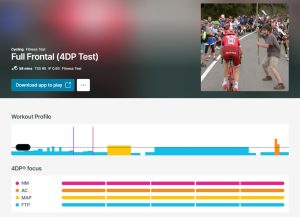 There’s no doubt that the 4DP test provides a more complete assessment of the kind of cyclist you are than a standard 8 or 20-minute FTP test does. After all, almost all group rides and even more competitive ones will require a mix of most of the types of efforts you do in a 4DP test, except perhaps a sprint.
There’s no doubt that the 4DP test provides a more complete assessment of the kind of cyclist you are than a standard 8 or 20-minute FTP test does. After all, almost all group rides and even more competitive ones will require a mix of most of the types of efforts you do in a 4DP test, except perhaps a sprint.
From my experience doing the 4DP test, I’ll also say there’s also no doubt that this is one of the hardest fitness tests an enthusiast will ever do. It requires far more mental strength than an FTP test, one that is already pretty taxing. And SYSTM asks you to do it at the beginning or end of every training block or about every 8-12 weeks.
They do say it’s for experienced riders “with experience pacing maximal efforts/fitness testing.” Yup. I agree with that.
But if you do the 4DP aka Full Frontal test, you’ll get a far better measure of just how good (or bad) you are at what it takes to do sprints, breakaways, climbs, or long days in the saddle at consistently high-performance levels.
TR and Zwift recognize that most enthusiasts don’t like or can’t consistently do the FTP tests that training workouts are based on and that we measure our progress against. Living in suburbia with lots of crossing streets and rolling terrain, I’ve never found a great place to do an FTP without driving almost an hour away.
Instead, TR and Zwift each use a trainer ramp test that, after 5 minutes of warmup, adds about 20 watts more resistance every minute or so until you can no longer keep the pedals turning.
SYSTM also added a ramp test followed by a 20-minute, heart-rate-driven tempo effort. They likely realized that the 4DP may not be for everyone and that revealing some of yourself through this aptly named “Half Monty” test is better than nothing at all.
Compared to the 4DP or FTP test, a ramp test is probably the most basic and least relevant test to predict your on-the-road performance. But since it is relatively easy to do compared to a 4DP test and can be carried out more consistently than a 20-minute outdoor FTP test with all the temperature, pressure, wind, and other differences that can comprise it, more of us are likely to do a ramp test and do it multiple times a year when called out at the beginning of key training blocks.
I think that’s what’s behind TR’s and Zwift’s thinking in using ramp tests to estimate your FTP.
Knowing your FTP enables you to set the zones that a workout uses to achieve your objectives. Riding in Zone 2 (or about 70% of your FTP) is a rather easy level intended to build your aerobic system. Riding in zones at roughly 10% increments below, at, or above your FTP or “threshold” builds a range of different strengths depending on the level you are riding, how long you maintain it, how much rest time there is between efforts at those levels, what your workouts were like in the days before, the time of year in your training, and other factors.
So, to the extent that you can enter an updated, consistently generated FTP estimate into your training plan at the beginning of key training blocks, your training is customized to your power level. That’s true even if the test is not the most relevant or comprehensive way to measure your power.
TR (+) also gives you the option to have your recent workouts predict the FTP you would get if you did a ramp test. They call this AI FTP Detection. If you choose it over an FTP test you get to avoid the stress of a test and do a productive workout in its place. Since this became available, I’ve never done another FTP test and find the adapted workout levels based on the “detected” FTP are generally the right level for my current level of fitness.
TR has taken the customization further. Applying machine learning technology in what they call “adaptive training,” they measure how you do against prescribed workouts and modify successive ones to adjust the level of difficulty based on your prior performance.
If you aren’t cutting it during workouts for whatever reasons – work, family, travel, sleep, or other stresses, or the workouts originally prescribed were just too hard for you – TR’s adaptive training is designed to ease up the level of your next workouts.
On the other hand, if you are progressing faster than the level set during your last ramp test FTP, the workouts won’t be hard enough to give you the intended training stress. TR will make upcoming ones more difficult to keep you progressing at the pace that better suits what you’ve shown you can do and toward your goals more quickly.
Adaptive training provides the kind of performance assessment and plan modification that a coach gives you. Rolled out in beta slowly since the spring of 2021, it’s still incomplete (for example, it doesn’t account for unstructured outdoor rides in the way it it measures your progress in different energy systems that are key to customized plan updates.) It’s also uncertain how well the machine learning algorithm, rider database, workout modifications, and perhaps other ingredients actually work to make you faster.
It’s very attractive in concept and time, or perhaps how effectively TR’s machines learn from its users’ data to improve their workouts and cycling training plans will tell how useful it is in making you faster and achieving your training goals.
Zwift (-) really doesn’t do any customization beyond inputting your ramp test projected FTP. While there’s a recommendation to do an FTP test at the beginning of a block of training, if you get you haven’t done an accurate or recent test or because you are incented to enter an inaccurate FTP or weight number to juice your watts/kg in competition with other riders, the training benefit is minimized.
FasCat (0) recommends 20-minute outdoor FTP tests done 2-3 times a year and schedules them on the second day of their training blocks. If you do them as prescribed, it’s a better measure of your FTP and therefore provides a better level of customization than a ramp test.
Comprehensiveness – How comprehensive are the training tools to do all the things that will make me faster?
Using different approaches, one that may suit your preferences more than the other, FasCat and SYSTM each offer training to make you a more complete and faster cyclist.
FasCat (+) puts a lot of emphasis on off-season weight lifting and year-round nutrition as integral to your cycling plan. You can select a ten-week weight lifting block, one that you do at a gym or another you do at home with the right equipment. Nested before and into those plans are cycling workouts that complement the lifting to prepare and further stimulate the muscles and adaptations that the lower body weight lifting exercises promote.
In addition, FasCat also has meal plans to help you lose weight or maintain a cyclist’s body composition and establish the fueling strategy you need to be a more accomplished cyclist. Running parallel and complementing the daily sequence of their cycling training blocks, the plans layout ingredients and recipes for 3 meals a day plus a snack that take 10 minutes or less to prepare.
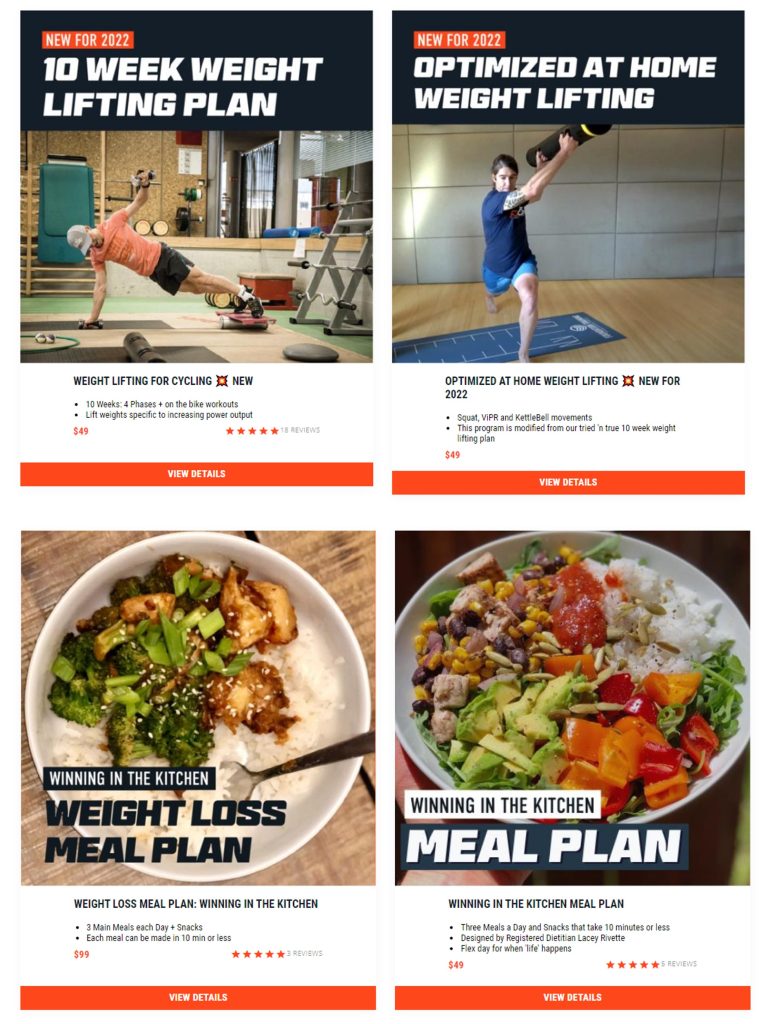 I’ve done the lifting and meal plans and they are the real deal. My FTP goes up 10% after a block of weight lifting. I plan my fall training around it. And eating right or at least better is something I always want to do but really didn’t have the knowledge or make the time to learn before I plugged the FasCat meal plan into my training.
I’ve done the lifting and meal plans and they are the real deal. My FTP goes up 10% after a block of weight lifting. I plan my fall training around it. And eating right or at least better is something I always want to do but really didn’t have the knowledge or make the time to learn before I plugged the FasCat meal plan into my training.
Or perhaps I should say before I plugged my wife into the FasCat plan. She makes the meals for me and, while not a cyclist, prefers the taste, variety, and healthfulness of them to some of the other dishes she used to make.
Here’s the eggs, fresh veggies, and rice dish she whipped up on a recent Tuesday morning before work.
Together, these plans have improved my FTP and reduced my weight while adding more muscle and setting me up with the right energy stores for everyday riding. It’s become part of my routine and increased my power-to-weight or watts/kg beyond where I had been able to get from the on-the-bike workouts alone.
SYSTM (+) has yoga, mental training, and resistance training that was part of the Sufferfest suite of plans that are now part of SYSTM. I’ve found their 15-minute yoga workouts – over 50 in total – essential to improving and maintaining my flexibility, core strength, recovery, and pre-ride muscle activation.
SYSTM’s mental training is also good for when my focus flags. Their body-weight resistance training – while not as effective as a weight lifting block – can be used to maintain strength during the season.
Yes, the added training tools from FasCat and SYSTM add time to your training. In my experience, however, doing off-season weight lifting and focusing on nutrition and yoga year-round has made me a better-performing, healthier, and more complete cyclist.
TR (0) and Zwift (0) don’t have any blocks or tools that complement their cycling training. While Zwift and SYSTM do provide running workouts and plans and SYSTM also offers swimming ones, training in those disciplines will detract from your cycling training.
MOTIVATION
The best cycling training plan is only as good as how well you do it. Some of us are self-motivated, A-type personalities, mentally strong, unflagging day in and day out, and will dedicate ourselves to executing a cycling training plan to a T if we believe it will get us where we want. You know who you are. I admire you!
The rest of us, and likely the overwhelming majority of enthusiasts and even pros, can’t pull that off. Motivating their cyclist athletes is a key role that coaches can also play.
The question I examine in this section is how well do non-coach services like FasCat, TR, SYSTM, Zwift do in motivating you to execute their workouts, training blocks, and plans.
While we’ve all found our way to an enthusiast level of passion for cycling, each of us is wired differently and finds the motivation to ride as often and as hard as we do from different sources.
I would argue that following and crushing your cycling training plan and the workouts within it requires a different mix of motivations than riding without a plan.
Here are a half-dozen sources that can make up your motivational mix while training and that I’ve looked for in the training services in this review.
- Fun – How much fun am I going to have doing the workouts and plan from this service?
- Comparability – How similar to what makes me love cycling will I find in the workouts and plan?
- Entertainment – How much entertainment comes with the plan?
- Immersion – What level of immersion will I feel doing the workouts?
- Social – Are there social components that will motivate me?
- Support – Do I get some kind of support along the way?
- Learning – Will I learn what is behind the workouts and plans to help me get psyched to do them?
Zwift
Because it provides such a high level of motivation from multiple sources, I find Zwift to be more fun (+) to train on than any other service. Along with the changes in terrain and environment, it is very comparable (+) to riding outdoors in groups or races or just on your own.
While Zwift has no motivating soundtrack behind your rides and uses only computer-generated animation, the dynamic flow of fellow riders you see or can ride with along the way along with the scenery is very entertaining (+). It’s also highly immersive (+). I find that time passes more quickly and you can do far longer rides on a trainer doing a workout on Zwift than most other trainer workouts.
Structured workouts are focused on you executing a ride designed around changing power, cadence, and duration and therefore by design, not very social in the way a non-structured workout ride can be. However, with so many people riding Zwift at any given time, you can be motivated by the social (0) aspect of riding with or passing others during your workout and becoming connected with people around the world in a way you never would riding your local roads or watching a movie during a workout.
The training aspect isn’t very social if you are doing one of Zwift’s workouts or plans. If you do a meet-up to train with friends or people in your club or do one of Zwift’s group rides, it can be quite social.
All of this is the reason why a lot of people do their indoor riding on Zwift using workouts from others. In fact, I would suggest that Zwift has become the place to train using workouts from other services far more than those designed by Zwift. And Zwift is probably ok with that.
I also find having useful online support behind my training plan to be a motivator as well as a way to learn more about why I’m doing what the workout or plan calls for. Zwift doesn’t provide any support (-) or learning (-) tools to help motivate the execution of your cycling training plan either about training in general or specific to the workouts Zwift provides. There are many 3rd party sites that do this themselves and fill this void in Zwift’s service.
SYSTM
Many of the SYSTM workouts use entertaining (+) video and music beds from UCI pro races, guide-led and narrated rides through Europe’s high mountains, GCN presenters, or rides with a Wahoo athlete or SYSTM coach. While there are 150 workouts accompanied by these kinds of videos (and another 100 that have no video), you will tend to see the same video and hear the same electronic-dance-music mixes several times in the course of a season-long training plan.
It can get old if you don’t take advantage of the full variety of workouts they offer.
While there’s no doubt that the cycling videos and workout instructions delivered on screen in the kind of language and humor a good cycling enthusiast will relate to adds to the comparability (0) of riding outside and can be deeply immersive (0) the first time through, these effects tend to wear off after several viewings. But, there’s more fun (0) doing the SYSTM program than those which have no video or music accompanying them.
Alternatively, if you prefer to watch a rerun of a world pro race, an action movie, or binge on a TV series, you can overlay the workout metrics and instructions on your video display. I’ve personally gone through several Netflix series and action films using the SYSTM feature that I’d never watch if I wasn’t training. (Not sure that’s a good thing, but…)
With the introduction of SYSTM came the release of a handful of 15-minute podcasts each dedicated to one training topic and presented in a very conversational and understandable way. They relate to cyclists trying to learn (0) the basics of why we are doing what the workouts are asking of us. It’s a good way to motivate training when you know why you are doing what is called for in a workout or training block.
The SYSTM Knowledge podcasts compare favorably in their focus and clarity to the handful of others I listen to. Many of those go on and on and often seem to lecture the listener on several course topics each podcast as if we were college or graduate-level physiology majors or cycling coaches working on our next level of certification. SYSTM’S podcasts don’t fall into this trap.
While SYSTM’s Wahoo X umbrella has a forum, many of its posts are focused on SYSTM and RGT products and less around training questions. It’s hard to see this or any other social (-) component motivating their training. The few times I’ve used the RGT platform I’ve been almost alone.
Unfortunately, SYSTM’s parent Wahoo has a poor support (-) track record. The basic quick-start and FAQ is online and the forum is a useful tool but there’s nothing like the chat offered by FasCat or the article database supporting TR or the deeper and broader forums at each that gives you the motivating confidence that you can quickly get an answer if you have a technical or workout question.
FasCat
As mentioned just above, the FasCat forum and chatline does an excellent job of motivating your training by providing their own or fellow user answers to questions about which training blocks to do and why. That support (+) and the notes that are attached to each workout give you the confidence that you can do their training blocks correctly.
I’ve also found the FasCat podcasts to be very helpful in explaining key training concepts and how they are applied in their training blocks without talking down to the listener. They also put those blocks in the context of what you are trying to achieve over an entire season or multiple years and with it, you learn (+), or at least I have learned how and why to link training blocks into a full-season cycling training plan to accomplish my event and performance goals.
Unlike some cycling forums, there doesn’t appear to be a handful of readers or coaches on the FasCat forum who bigfoot every comment or question with one of their own. It feels more open to good questions or ones you might think are stupid and would be afraid to ask somewhere else. The answers are generally brief and useful and come with less condescension or snark than you often see elsewhere.
While there’s nothing about their workouts or plans that make give the workout a social (0) experience, the collaborative feeling of the forum and the likelihood that you’ll do more of your training on their plans outdoors than in your basement does make it relatively social on par with TR and Zwift, albeit in quite different ways.
FasCat’s outdoor training origins and bias do make their workouts more comparable (+) to regular cycling and I find them as immersive (0) as SYSTM and more so than TR. Since you’ll also be doing a lot of FasCat workouts on an indoor trainer when you can’t ride outside and where you are pretty much at the mercy of the entertainment (0) you add yourself, it’s not as immersive or fun (0) as Zwift.
But, unlike what’s possible to do with SYSTM and a bit of a convoluted solution with TR, you can easily do a Zwift ride controlled by your FasCat workout plan. You merely select the training tab on the Zwift menu and click on your FasCat workout that is scheduled in your TraningPeaks account. You see the interval information, countdowns, and kites on Zwift and, if you choose ERG mode, your trainer will provide the resistance of the FasCat workout on the Zwift platform as it displays your performance metrics.
TR
While probably the two cycling platforms with the largest number of users, TR and Zwift couldn’t be more different in how they motivate you. Granted, TR is all about training while Zwift appeals to a far wider range and number of riders. But, I find it interesting how differently they go about getting their subscribers to come back for more.
TR puts a lot of effort into their podcasts to help you learn (+) not only how to train but what it’s like to be in the middle of a season of training and the success you can achieve from doing it right. Their support (+) through their direct, forum, and content channels is also first-rate.
On the flip side, there are no components or tools I’ve found that motivate you through entertainment (-) or give you any type of immersive (-) experience. That is unless you find looking at a bar graph for an hour entertaining and immersive.
The instructions and explanations that run atop the workout graph on the screen are long and dry. (And believe me, I know what it means to write long, dry text.) These instructions look and read almost as if they are footnotes yet appear so regularly and are so important to you executing the workout correctly with all the changes in power and cadence built into the TR workouts that you really should follow them closely.
Full disclosure, I don’t.
If you are using a desktop, you can run the TR workout details in “minimal mode” on top of your chosen entertainment.
And to be fair, TR does offer full videos and analysis of the NorCal crit races that some of their employees enter. You can also watch their podcasts.
If you want to call this entertainment (TR doesn’t), then you’re easily entertained. There’s no motivating music bed under the race videos and the action isn’t synced to the power level called for in your workout. Just a lot of loops of a crit course.
As for their weekly Ask a Cycling Coach podcast, finding the nuggets of useful content inside the 2-hour piles of product promotions, discussion of the hosts’ recent races, and 20-minute long, dentist-visit-like “deep dives” on a single topic is a workout in itself.
I also find the TR workouts the least comparable (-) to cycling on the road or in events. The workouts are relatively short and unlike the endurance rides I do, the intervals come relatively frequently, and even the outdoor rides require more Chris Froome-like staring at your head unit than I care to do.
If you’ve read many of my posts, you’ll see I’m rather analytical. I studied engineering and business in school, spent most of my career in demanding business consulting environments, and am a highly driven, A-type guy. You’d think TR’s approach to motivation or lack thereof wouldn’t bother me.
It doesn’t bother me but while I’m won over by other aspects of TR, I just don’t find it terribly fun (-). It took some of the training features like Adaptive Training and AI FTP detection to finally make it stick but I’ll admit to going off the plan by doing group rides and long, unstructured weekend rides that are at odds with their training approach.
Training well is all about each of us finding the cycling training plan service or services that suit us uniquely. Quality and motivation are key parts of it. The two areas I’ll go into next – compatibility and development path – are also important in making the right choice over the long term.
Find what you're looking for at In The Know Cycling's Know's Shop

- Compare prices on in-stock cycling gear at 15 of my top-ranked stores
- Choose from over 75,000 bikes, wheels, components, clothing, electronics, and other kit
- Save money and time while supporting the site when you buy at a store after clicking on a link
COMPATIBILITY
Here’s a refresh of the things I’m looking for under the cycling training plan compatibility banner.
- Trainers – How well do they work with smart and dumb (fluid) trainers?
- Outdoor – How well do they support outdoor workouts as well as indoor ones?
- Power Meters – Do they talk with power meters and head units over ANT+ and BLE, over iOS and Android?
- Displays – What number and quality of displays do I need to get the full benefit from them?
- Feedback – Are Trackers like TrainingPeaks and Strava and their metrics part of the performance feedback loop or do they have their own metrics and feedback?
- Habits – How compatible is the training plan with my riding habits and preferences?
There are probably more similarities than differences between the training plan services around these compatibility questions.
Unless you live in a climate that allows you to ride outdoors year-round (lucky you) or only plan to train during the months when you can do it outside (not advised), you will need an indoor trainer to use with any good cycling training plan and certainly these four.
Zwift training plans are only designed for indoor trainers. That’s also the only way to do SYSTM training now, though they say they are working on adopting their workouts for outdoor riding. If you believe in year-round training and training both outside and inside as I certainly think any true cycling enthusiast should, Zwift’s and SYSTM’s indoor-only cycling training blocks or plans won’t get you far enough.
I also find that Fascat workouts done indoors or outdoors are more similar to outdoor riding than TR ones because of their longer intervals and freedom to choose your own cadence in most cases.
Outdoor training is best done with a power meter. You can use the perceived effort method but it’s not precise enough or dialed into zone-based training that most modern cycling training plans and services prescribe for both outdoor and indoor training.
For most bikes and groupsets, you only need to spend $250 for a perfectly good power meter to do any cycling plan. You can and may want to spend more, though typically not more than $1000, to get one that better suits your preferences. My comparative review of The Best Power Meters For You can help you make the right choice.
Having a power meter on your bike gives you the option to avoid having to buy a $1000 +/- $250 smart trainer or a far more expensive smart bike that has a built-in power meter with the same level of accuracy as the one on your road bike.
Instead, you can connect the power meter, cadence, and speed sensors on your bike to the training software you are using with your road bike riding on a perfectly good $300-400 fluid trainer or even less expensive set of rollers.
(Click on these links in the above two paragraphs to go to my Know’s Shop to compare trainer prices and inventory from about 15 online stores I recommend.)
A smart trainer does give you the ERG mode that automatically adjusts the resistance in your drive train to the power targets during your workout. That can help you perform at power targets set for each workout interval.
On the other hand, not depending on ERG mode or using a fluid trainer or rollers is more like what you’ll experience on the road both when you train to a plan outdoors and when you do a race or event where you want to apply the training you’ve been doing.
Either way, there is no difference in the trainer or power meter compatibility of FasCat, TR, SYSTM, or Zwift. All of these services will work with all work using the leading communication protocols (ANT+ and BLE), head units (Garmin, Wahoo), and laptop (MacOS and Windows), tablet, and smartphone (iOS and Android) operating systems.
The same goes for the compatibility of displays with those services. While they have some differences in how you set them up, you use your Garmin or Wahoo head unit to see and record an outdoor workout and use a laptop or head unit indoors and can also use a tablet or smartphone with some training software.
Here’s a photo of my latest pain cave setup. I use a smart trainer at times in ERG mode, a windows laptop connected to a big screen tv/monitor for entertainment and/or workout software, sometimes a head unit for workout control, and a large speaker connected to my laptop for music I’m training with, sometimes connected to the video and at other time to a music streaming app.
I do use one or more power meters on my indoor bike, more for power meter comparison testing than to control the workout. When I do this testing, I also have additional head units connected to the power meters.
It’s far more sh*t than most enthusiasts need or should have to spend money on. Unfortunately, I’ve got this thing about writing gear reviews so I tend to overdo it sometimes but rationalize it by thinking I need this stuff to fully examine what I’m writing about and stay in shape so that I can keep riding.
Having a singular platform to collect and analyze your workout and non-workout ride data from both inside and outside rides is important to getting feedback on your performance progress. Trackers Training Peaks and Strava are probably the most widely used ones for this purpose. In my experience, Training Peaks and their workout analysis metrics like TSS, CTL, etc., and their Performance Management Chart are industry-standard tools that best support season and multi-season long cycling training plans.
You can upload your workout data from Fascat, TR, SYSTM, and Zwift to Training Peaks, Strava, and selected other Trackers now. You also schedule your FasCat rides and those of most Coaches and Plans services through Training Peaks. TR and SYSTM have their own calendars for their workout schedules that don’t import to the Trackers.
Before starting with any of these services, it is really important to determine how compatible the quality and motivation aspects are with your cycling habits and preferences. Some may prefer the immersion of Zwift, the comprehensiveness of SYSTM, the adaptability of TR, or the more outdoor-oriented workouts of FasCat.
My summary of each of these plans at the top of the post, the comparison chart and commentary that follows, and the examples of how my fellow In The Know Cycling testers and I train in the section below are intended to help you determine what the best training approach and services might be for you.
PATH
I’ll readily admit that it’s been difficult for me to settle on a steady training approach over the last 5 years or so. My nature is to continuously try new things as I learn more about training, what training approaches appeal to me, and which services and their plans help me make the most progress against my goals.
Yet it’s been made even harder by a lot of the new cycling training plan services and changes in existing ones over that period of time.
Most enthusiasts that do structured cycling training recognize that it’s at least a season-long and more likely a multi-year process to keep improving and get faster. It’s also quite clear that the products and services from Plans, Workouts, and Games providers are advancing their offerings rapidly and some of the providers themselves are investing and growing more than others along different company development paths.
Each of the four I’ve reviewed in-depth has changed and grown a lot in that time and some may continue to do so. While it’s not easy to predict what’s coming next, it is important to consider the paths these companies and their products appear to be on to help you choose a training approach and service to use.
In my commentary below, I focus on three sets of questions in my assessments of each company.
- Product – How much product development have they announced or do they periodically introduce to improve the cycling training benefit to enthusiasts?
- Integration vs. Interoperability (IvI) – Are they moving toward a proprietary, “walled garden” approach with integrated metrics, tools, hardware, software, and/or protocols that will make the training benefit better or make me more locked in to their product? Or are they working to make their plans, workouts, games, and apps more interoperable with other protocols, products, and players of the cycling “ecosystem” that will improve cycling training?
- Outlook – Based on their position, growth, and funding (where known), does it look like they will thrive, hang on, or fall away? What light does that shed on the ability to execute their path to serve cycling enthusiasts?
Zwift
It’s hard to know what development plans Zwift has for its cycling training products(-). As I detailed in the discussion of their cycling workouts, blocks, and plans in the Quality section above, there’s relatively little there now and certainly not enough to build a cycling training plan around.
To improve its cycling training product path, I see a few options for Zwift. It could buy a Plans service like FasCat that could bring a far more robust range of cycling planning into Zwift. Alternatively, Zwift could buy a Workouts company like TR that has cycling plan technology which would attract and easily create plans for a large number of current and new Zwift users. I don’t see them developing workouts, blocks, or plans that compete with the best in these other categories.
Zwift’s outlook (+) is very strong. They’ve been well funded by venture capital and private debt since their founding in 2014 and took on $25 million of additional, later-stage funding in March of 2021. Their valuation at that time was $2.6 billion, a billion more than in September 2020 when they raised $450 million. They claim to have hundreds of thousands of subscribers, sales doubling in 2020, nearing $100 million in subscription sales, and about 500 employees.
While I hope I’m wrong, it doesn’t look like they are prioritizing money to build their cycling training portfolio. They’ve introduced a smart trainer that, at $500, looks to me is priced to add subscribers than make money on hardware.
Better training tools, workouts, and plans for enthusiasts don’t look to be on their radar. They’ve updated their user interface, added new worlds, pacing avatars, and other software features and improvements.
As it helps all enthusiasts that use Zwift along with other cycling training plan services, their integration vs. interoperability or IvI (0) favors interoperability.
TR
Among companies I’ve reviewed here that are leaders in the Plans, Workouts, and Games categories, TR (+) appears to be the out-front in developing new or enhanced products (+) to improve the cycling training experience for users. Through the tools and features I described above that they’ve been introducing recently, they have given you the ability to easily create and dynamically update a season-long training plan customized to your goals.
Perhaps even more useful, TR has rolled out a monitoring system built into your plan that adjusts the structured workout selection and levels as you progress toward those goals and how life can sometimes get in the way of them.
While somewhat interoperable with other players in the cycling training ecosystem now, these developments have moved them to more integrated, proprietary (and perhaps superior) metrics that can’t be combined or compared with standard TrainingPeaks ones used now. For this reason, I rate their IvI (-) moving toward a less favorable position relative to the others reviewed here.
While certainly not as strong as Zwift’s, TR’s future outlook (0) appears good. They are a self-funded startup, have never taken any private equity funding, and appear to be using the cash flow from their profit growth to add employees that are developing their new training technologies and products, all at a pace that appears faster than others I’ve reviewed here and in the entire cycling training plan services space.
Assuming the new products they’ve recently introduced are successful and the company continues to grow, these investments will put them ahead of other cycling training plan services, if aren’t already there.
Judging from how the co-founder/CEO talks about his company and his vision of himself as an entrepreneurial leader, I’d expect he’ll want to cash out at some point. TR might sell either to a strategic buyer that wants to use TR’s products and technology to fill a gap in their own (e.g. Zwift, Wahoo) or to a financial buyer that can more quickly fund the growth and unique position of TR’s products and technology, fill in gaps in its service or experience, invest in additional marketing and customer acquisition, etc. to where it will be more attractive to a strategic buyer.
SYSTM
Some saw Wahoo’s announcement of SYSTM as largely a rebrand of the Sufferfest training service the company had bought 18 months before.
I see SYSTM more as a fitness training platform that helps sell Wahoo’s hardware products. And while Wahoo’s hardware has more and bigger product roots in cycling gear than any other sport, it is moving closer to its mission of being a fitness hardware company than a cycling one with new products like its smart bike and sports watches.
Not available in Sufferfest, SYSTM added running and swimming workouts in their latest release. Unless you are a triathlete, that doesn’t move the ball downfield for cyclists. SYSTM now works in the Android world (Sufferfest didn’t) in addition to working over Apple and Windows devices.
They’ve also introduced a new website, added podcasts and a forum, and continue to expand their library of cycling workouts with a wider variety of video and music entertainment beyond the UCI video, dance music soundtrack Sufferfest formula. Some is celebrity-oriented – ride with the pros or a GCN instructor or with a Wahoo ambassador – while others have no video or music at all.
The addition of the RGT Games category platform still looks like a weak appendage than an integral part of the Wahoo X offering. The road map for its improvement and ability to compete with Zwift in the Games category or in a broader way as Wahoo envisions with the X offering hasn’t been supported with more than marketing programs at this time.
Despite no big cycling-specific reveals in the SYSTM introduction, the cycling-specific product (0) path they’ve told me and others about but haven’t announced or put a time frame on include outside workouts and machine-learning-enabled workout adaptation.
For its cycling training components, SYSTM’s voiced but not announced developments sound like they are headed down the path that TR is already riding. That also includes some proprietary analytical approaches and metrics that may make your workout metrics and analysis more unique to SYSTM workouts. As with TR, these may prove to be better metrics but move them toward less interoperability or an IvI (-) and that’s less favorable in my view.
With the trainer struggles of parent Wahoo that led to layoffs in 2022, SYSTM’s outlook (-) is not as good as TR and Zwift. Because SYSTM’s subscription model is more highly valued by investors than the hardware product one, I would expect SYSTM will remain funded to continue its cycling training development path but to a much lesser degree than was envisioned before the trainer downturn.
The speed of SYSTM’s development will be hard to tell. No announcement of a major new cycling product offering as part of the SYSTM introduction suggests to me that SYSTM is moving down whatever its intended path is more slowly than planned or hoped for.
With SYSTM a part of Wahoo and regardless of Wahoo having invested to buy Sufferfest and Sufferfest previously having absorbed APEX Coaching to lead the creation of Sufferfest’s and now SYSTM’s cycling training plans, SYSTM’s development path probably best needs to be looked at in the broader context of Wahoo’s future.
Wahoo went through an LBO in July 2021 and took on additional investment in 2021 at that time. Despite having several winning products like their smart trainers and bike computers, as a private company, it’s hard to know what position Wahoo is in to fund SYSTM’s or Wahoo’s own growth plans.
Leveraged buyouts are usually accompanied by a change in company structure and/or strategy followed by an acquisition or public offering. Wahoo has been around since 2009, raised just under a million dollars, has estimated annual revenue of $15 million (per PitchBook) yet has about 250 employees (or half of Zwift). They aren’t large enough or growing fast enough for a public offering so it’s likely they’ll be acquired by a strategic buyer, perhaps in the next few years.
SYSTM could continue to be part of Wahoo as a private or acquired company or be sold to another business. Its strength as a cycling training plan service suggests to me it would remain intact in some form.
We’ll know a lot more as their product (and corporate) development plays out and we see how well what currently looks like a somewhat disparate number of elements within SYSTM and between SYSTM and Wahoo’s hardware products mesh together, or not.
FasCat
As a coaching company that has put a lot of emphasis on selling packaged training blocks or plans, FasCat’s product (-) path is limited by the time its founder/head coach has to develop new plans and services while continuing his one-on-one coaching and other company responsibilities.
I’ve seen a half-dozen or so new cycling training plans from FasCat each of the last few years that either refresh or extend older ones or reach into new areas like gravel and Zwift racing. But unlike training services like TR and SYSTM, FasCat and likely most Plans companies that emerged from coaching ones don’t have the dedicated staff to do anywhere near the extent and range of product development that larger ones do.
As their plans are downloaded to a Training Peaks calendar, Fascat remains highly interoperable – IvI (0).
FasCat has been around for 20 years and expanded its products and coaching staff over that time. While still feeling quite personalized, it has expanded its digital platform with an active user forum, a useful podcast, and an informative (rather than just promotional) weekly newsletter in recent years.
That said, unless it gets bought by a larger platform as Sufferfest bought APEX, another Boulder coach-led business that started around the same time, FasCat’s future remains highly dependent on its founder/head coach’s plans. It looks to have more of a tortoise than a hare approach suggesting to me a steady outlook (0) with its owner year from retirement.
HOW IN THE KNOW CYCLING TESTERS TRAIN
Early in my research for this post, I sent an email to my fellow testers Miles, Nate, and Aiyana to learn how they approached training, what cycling plan services they used, and what they thought of them.
As they have all been successful in achieving their goals amidst very busy lives similar to those that many enthusiasts like you probably have, I thought I’d share their approaches to training with you in addition to my own.
With 20 years of so as enthusiasts and with amateur racing in their backgrounds, it’s fair to say that they’ve been at this since before most cycling training plan services like those I’ve reviewed here were in business. While they’ve all had coaches in the past (Nate’s as a college runner rather than a cyclist), none have used them recently and they’ve developed their own training approaches that work best for them.
Here’s what they told me about their approach to cycling training plans
Nate
 “My HS and collegiate running career notwithstanding, I’ve never really had a coach or used a virtual coach/training plan.
“My HS and collegiate running career notwithstanding, I’ve never really had a coach or used a virtual coach/training plan.
I signed up for a Strava-based CTS email training plan back in the day (7+ years ago) but never really stuck with it… it didn’t jive with my informal “training schedule” dictated largely by group rides (50+ mi moderate tempo rides on Saturday, 1 hr near-threshold on the Tuesday Bullet Train, and maybe another day, usually Thursday, with an up-tempo group ride or possibly some KOM chasing to get the heart rate peaked). Easy/rest days the other 3-4 days per week, and an occasional race depending on the season, or an “empty-the-tank” endurance ride of 6+ hours 1 or 2 times a month.
So, pretty non-structured… more like principles than a plan. I feel like I could be marginally faster (like a minute or two faster on Mt. Washington) with a dedicated summer plan that didn’t take much extra time or over-constrain my schedule, and maybe I’ll do that next year (sound familiar ???) 😉 But I always hesitate to let something make cycling feel more like a chore and less “just-for-fun” (note, by “fun” I mean ripping around really fast and making other people hurt- so they aren’t mutually exclusive and as I get older I’ll probably require the training plan just to keep that part of the fun intact).
What I probably could benefit from most is an off-bike training plan like regular stretching/rolling, resistance/core, etc. to keep injuries minimized so that I can continue to ride at my current level without putting in too much more focus.”
Miles
 “Hi guys, I am pretty much the same as Nate though I probably do more solo rides than Nate. I write my own informal plans and generally stick to them before big events like Nationals and GMSR (Green Mountain Stage Race – editor). I almost always take Mondays as rest days and I do give myself easy weeks to recover.
“Hi guys, I am pretty much the same as Nate though I probably do more solo rides than Nate. I write my own informal plans and generally stick to them before big events like Nationals and GMSR (Green Mountain Stage Race – editor). I almost always take Mondays as rest days and I do give myself easy weeks to recover.
My data loads into Garmin Connect, Strava, and Training Peaks. Though I have been loading data into Training Peaks for years, I do not subscribe to it and I really do not look at it…I more told myself to load data there in the event I do subscribe in the future (hasn’t happened yet).
I use a power meter for intervals….but I only have a power meter on the Propel (Giant Propel road bike – editor).
During the month of July (a lot of solo riding, week in Maine, etc), I focused on overall volume with two days per week as hard days. During July, I was doing 300+ miles per week average I think. Then I tapered for nationals. I’ve been doing this so long (since 1990) plus years of marathon running….that I know how to train without help. That said, like Nate…I am sure if I hired a singular professional coach like Alec Donahue….that I could be faster. But I need the flexibility like Nate said.
I do use the Strava fitness and freshness feature to some degree. In the winter, for years I have been doing some adaptation of a group coaching plan my 545 Velo club bought into years ago which has two Quality Sessions per week for 16 weeks….generally 1-5 minute interval sets on Zwift. Oftentimes these are done as meet-ups within the team with the keep everyone together feature on.
I ride less in the winter but still manage 6-8 hours per week on the trainer. For the first two winters during the pandemic I organized pretty successful and well-attended Zwift races that were done as meet-ups, private invite only. I believe the largest one to date had 50 starters. I did these once every 10 days for a total of 6 races last winter, January through March.
Hope this is helpful!”
Aiyana
 “Hey there. Since I’m not racing anymore, I don’t really follow much of a plan at all. Like Miles, I historically have taken Mondays off.
“Hey there. Since I’m not racing anymore, I don’t really follow much of a plan at all. Like Miles, I historically have taken Mondays off.
When I was racing high level I had a coach who had me use Training Peaks & I loaded all rides into that. Most of the training was solo rides with designated group rides based on what I wanted, like a super-fast Tuesday and a fun with friends challenging/long Saturday. We had build weeks and taper weeks.
I also did a bunch of winter drills like one-legged, high cadence, and seating climbing in winter. The coaching was based on FTP, TSS, and RPE – the rate of perceived exertion rather than power. So if you ‘feel like you’re at a 7-8 level (out of 10) for a time trial type ride but had a shit night of sleep, you probably go slower/less power, but have a similar workout and don’t get fatigued/sick. He also got me onto Sufferfest when it was still stand-alone videos for very specific training that can be hard if you hit a traffic light or go with a group that’s too fast/slow, etc.
From what I’ve read over the last year or so, adding strength-based training year-round (for women at least) is still relatively new, so I’ve started doing some of that, especially this summer during my knee recovery period.
Before having a coach I used a training bible with an actual book that had plans. It was helpful when I did triathlons and mostly helped me to not overtrain!
But otherwise, I mostly go with how I feel and what will allow me to ride every day or nearly every day. When I got more into MTB in 2019 I had to build a different type of base to allow me to ride more than 10-20 miles at a go. That was a great experience!!”
Steve
 I’ve never done road races, crits, or TTs but I do train for long road and gravel climbing and endurance events. I also try to keep my training synched up to be able to ride and occasionally pull or at least not embarrass myself too much on Saturday B-group rides. Those are typically the best training rides I do all week, certainly the most fun.
I’ve never done road races, crits, or TTs but I do train for long road and gravel climbing and endurance events. I also try to keep my training synched up to be able to ride and occasionally pull or at least not embarrass myself too much on Saturday B-group rides. Those are typically the best training rides I do all week, certainly the most fun.
Before getting into cycling, I played all the major sports in high school but went furthest in ski racing both as a competitor and as a club and high school coach. Being a coach, I learned you need to have a well-thought-out plan not just for every practice but for the entire season and from season to season if you want to see your athletes progress. So I really dug into that and carried that mindset into cycling.
When I started riding seriously, I was guided for years by the Cyclist’s Training Bible written by Joe Friel, the father of endurance training. Training Peaks also used to have their own training plans that I used and strung together for an entire season. I really got into seeing how well I did in making progress year to year.
My goals are rather simple now – feel good about how I perform at a half dozen specific road and gravel endurance events each year, have fun on the group rides, and stay fit enough to be able to test all the gear I want to check out and review for my fellow cycling enthusiasts like you.
To accomplish those goals, I put a cycling training plan together in the fall for the following year complete with A, B, and C events, and revisit what training plan services can help me get there. I also listen to a stupid crazy number of podcasts every week that talk about cycling training, exercise physiology, and the broader realms of exercise and sports science.
I have used all of the training services I’ve reviewed above – Fascat for cycling training blocks and their fall strength training and year-round nutrition plans, SYSTM for their cycling, yoga, maintenance resistance training, and mental training blocks and even a stretch of one on one coaching with one of the APEX coaches before they became part of Sufferfest, and Zwift from November through March as the indoor course which I do workouts from others on and for their group rides.
I’ve done TrainerRoad the past year and generally been happy with it. The Plan Builder, Adaptive Training, and AI FTP Detection features make it so I don’t have to stress over the workouts, blocks, plans, and progression through the year. I’ve bought into the technology behind it and like that I can go off the script for group rides or ski days or family weekends and it will adapt.
And I also use the free version of Training Peaks and Strava. Since TR has its own tracking system and calendar, I don’t really do anything with the Training Peaks data though I might in the future. I only use Strava to let my riding buds know what I’m doing and keep up with them.
Probably too much but nobody’s got all the things I want and at about $50-60/mo, I’m still way ahead of what I’d spend with a coach.
* * * * *
Thank you for reading. Please let me know what you think of anything I’ve written or ask any questions you might have in the comment section below.
If you’ve benefited from reading this review and want to keep new ones coming, buy your gear and kit after clicking the store links in this review and others across the site. When you do, we may earn an affiliate commission that will help me cover the expenses to create and publish more ad-free, subscription-free, and reader-supported reviews that are independent, comprehensive, and comparative.
If you prefer to buy at other stores, you can still support the site by contributing here or by buying anything through these links to eBay and Amazon.
You can use the popup form or the one at the bottom of the sidebar to get notified when new posts come out. To see what gear and kit we’re testing or have just reviewed, follow us by clicking on the icons below.
Thanks, and enjoy your rides safely! Cheers, Steve



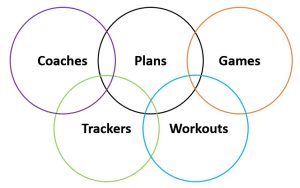

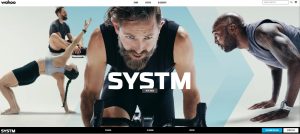
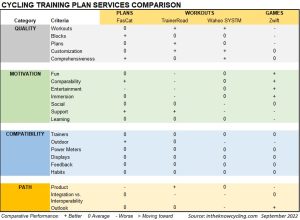

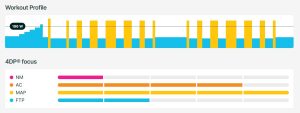

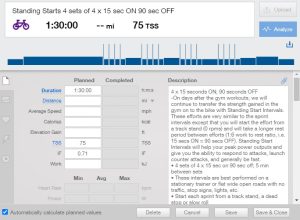
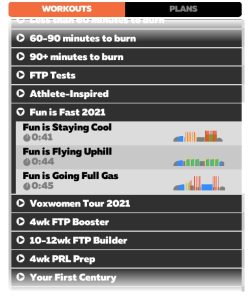

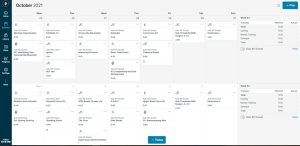

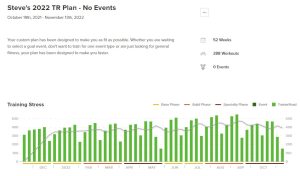
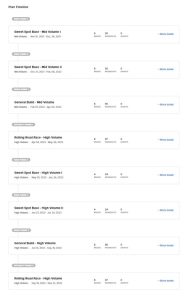
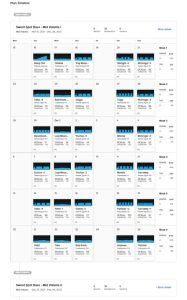


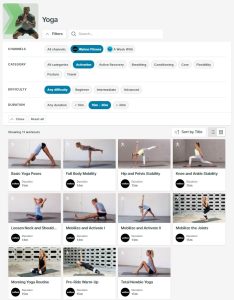

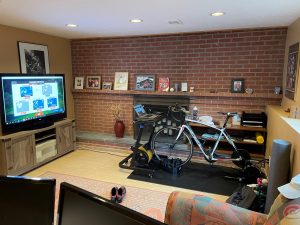
Anyone have any experience with Basecamp?
Hey Steve. Wondering if you’ve checked out FulGaz before? I’m new to inside training and have been doing the rounds, testing the apps available to me. I find Zwift a bit too game oriented and ROUVY too clunky with playback issues and a very thin offering of features within the app. FulGaz is like ROUVY in that they use filmed rides but FulGaz doesn’t integrate any VR/AR elements. Video quality is significantly better. Ride feel of your trainer can be customised and tweaked to your liking and they offer up training programs designed toward increasing your FTP or being a better climber. There is also a virtual coach that ‘rides’ along with you during workouts by way of text messages on screen or audio announcements.
I don’t work for them – just really enjoying their training programs and thought you should check it out if you haven’t already. Great for those stuck indoors during the winter.